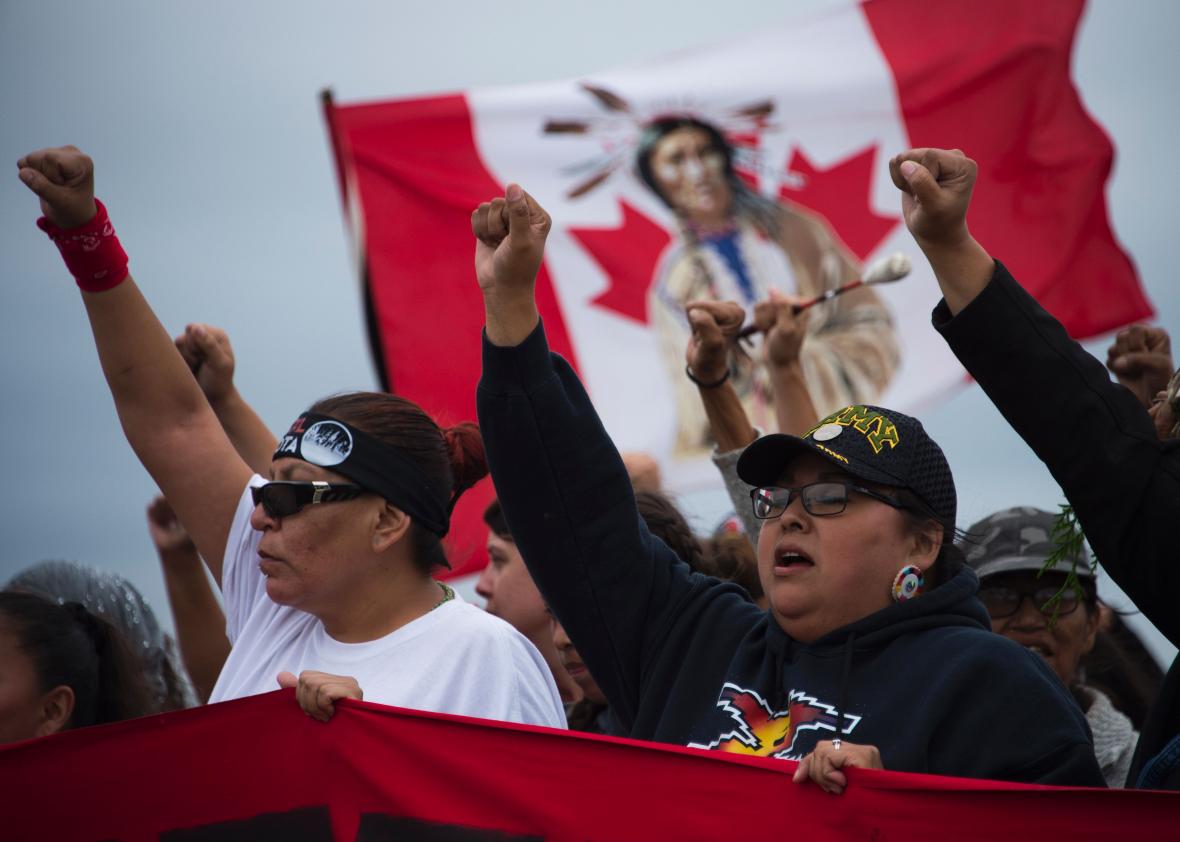Police Clashed With Dakota Access Pipeline Protesters Sunday Night

Robyn Beck/AFP/Getty Images
Sunday night, about 400 demonstrators in Cannon Ball, North Dakota, protesting the Dakota Access pipeline clashed with police as they marched toward bridge and pipeline construction sites. From the Washington Post:
The clashes began around 6 p.m., when protesters attempted to remove burned out trucks that had been blocking the bridge since authorities and activists faced off there in late October. Police have since set up wire and concrete barriers on the bridge, which is about a mile south of where the pipeline developer plans to drill.
Protesters, who call themselves “water protectors,” have argued that the barricade prevents emergency services from reaching the Standing Rock Sioux Reservation and a nearby camp they have used as a staging ground for demonstrations.
Police reportedly responded with tear gas, pepper spray, rubber bullets, and, despite below freezing temperatures in the area, water cannons.
Video of water cannons being used on protectors in 26°F/-3°C at barricades at barricades in North Dakota 📷: @johnkdangers #NoDAPL pic.twitter.com/L8gYUglJ9v
— IndigenousEnviroNet (@IENearth) November 21, 2016
Sheriff's spokesman Rob Keller told NBC that no water cannons were used and water was only deployed to put out fires set by #NoDAPL crowd. pic.twitter.com/9qc2l10rOX
— Unicorn Riot (@UR_Ninja) November 21, 2016
A group called Indigenous Rising Media claims 167 protesters were injured and police have said one officer was hit by a rock.
In a piece early this month, Nives Dolsak and Aseem Prakash explained the DAPL controversy:
DAPL is designed to carry 570,000 barrels of Bakken crude oil per day from the Dakotas to Illinois. To make this journey, DAPL needs to cross the Missouri River. Initially, this crossing was supposed to take place just north of Bismarck, the capital of North Dakota. But engineers flagged the possibility of drinking water contamination if the pipeline were to leak. DAPL was therefore rerouted north of the Standing Rock reservation instead. The message is clear: While the risk of water contamination is not acceptable for Bismarckians, it is OK for the Sioux Indians.
The pipeline is nearly complete and Kelcy Warren, the CEO of Energy Transfer Partners, which is building DAPL, has said that a reroute will not be considered. Last Monday, the Army Corps of Engineers issued a call for more dialogue with the Standing Rock tribe as it considers whether to grant an easement for the next stage of the pipeline.
